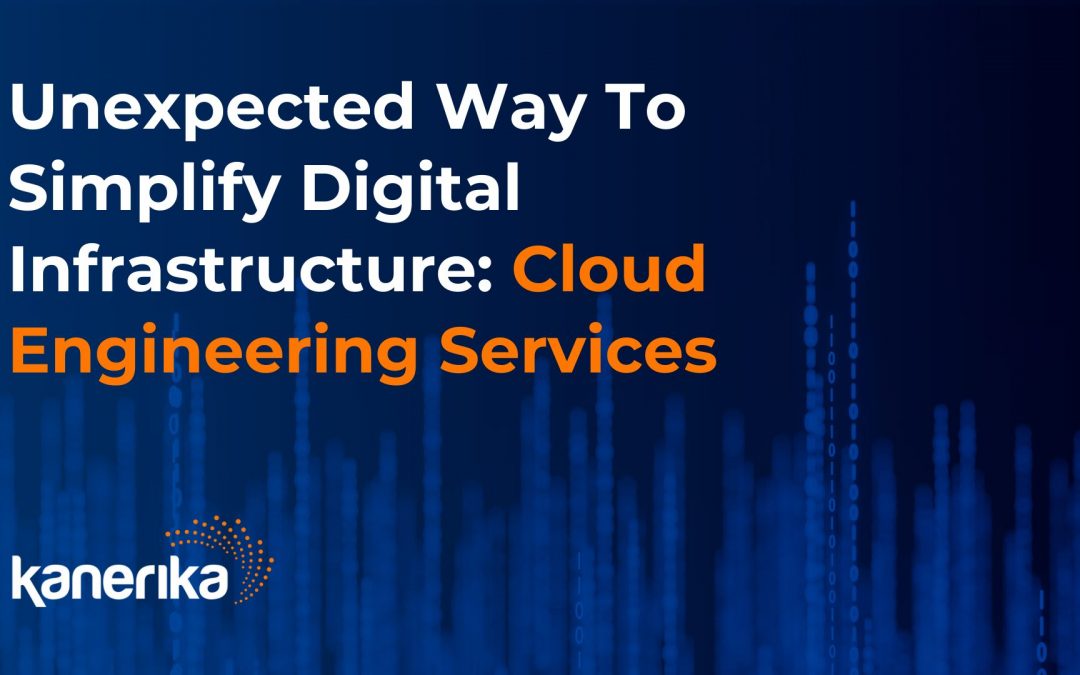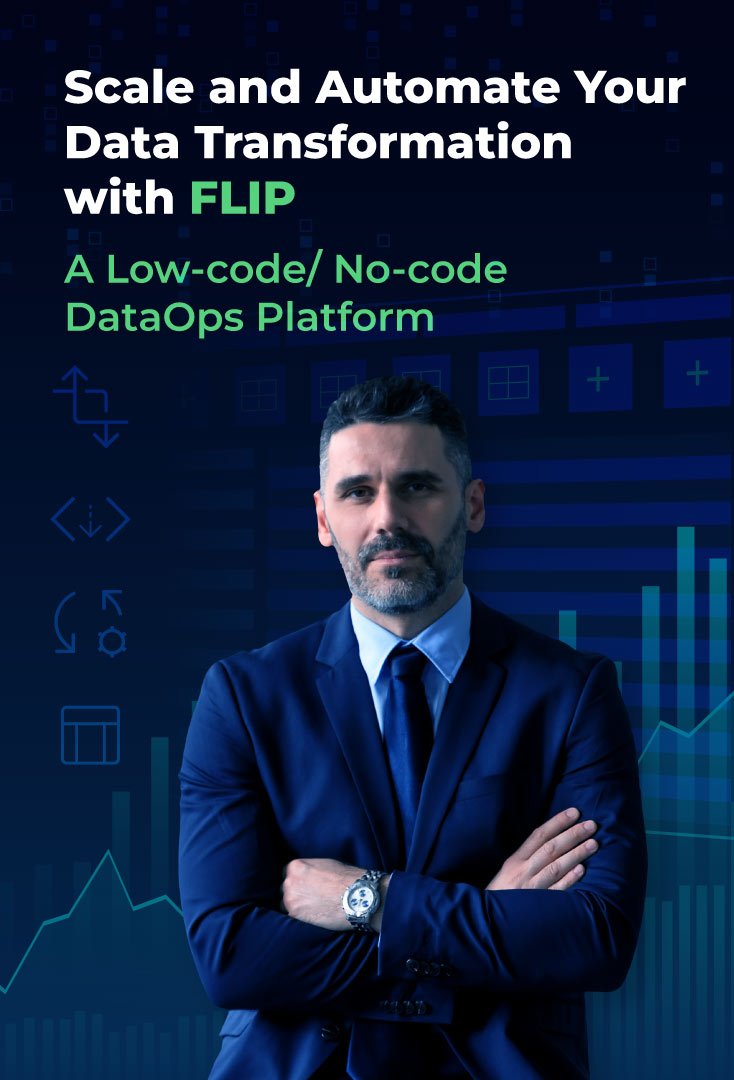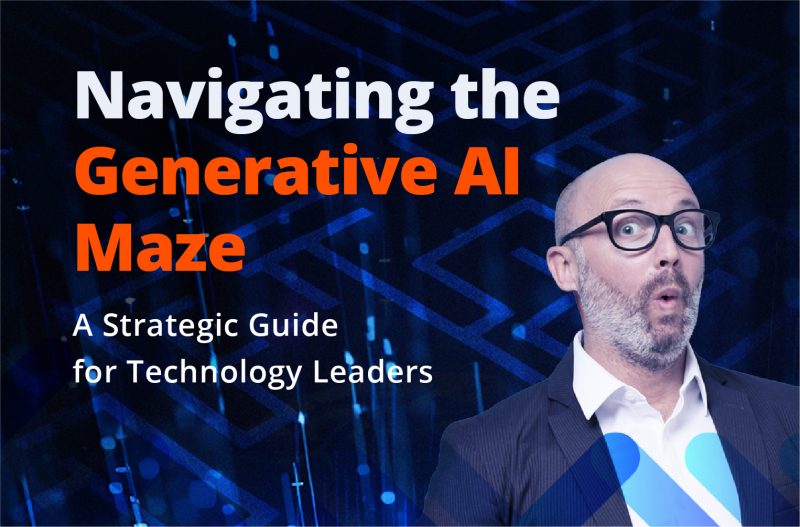Cloud engineering services lay the foundation for a new digital era. These services can build a world where operations are no longer tethered to the physical limitations of IT infrastructure. A world where scalability, innovation, and optimization are not just aspirations but realities. As we navigate through this field, we encounter a plethora of services, each designed to unlock the boundless potential of cloud computing.
These services are not merely about deploying and managing cloud solutions; they are about transforming the way businesses operate. Central to cloud engineering services is the ability to to meet each organization’s unique needs with a variety of service models, from Infrastructure as a Service (IaaS) that provides on-demand compute, network, and storage resources to Platform as a Service (PaaS) that equips developers with the tools to build and deploy applications more efficiently.
However, the journey to the cloud is not a linear one. It requires strategic planning, careful execution, and continuous optimization. It calls for the expertise of cloud architects and engineers, specialists in platforms like AWS, Azure, or Google Cloud Platform. These experts guide businesses through the complexities of cloud migrations, secure cloud environments, and implement best practices to maximize performance and cost-effectiveness. Their expertise paves the way for a seamless transition to the cloud, laying a scalable foundation for future growth.
Cloud Engineering Service Models
Cloud engineering service models define the type of services you can expect from cloud computing. Each model specifies a different level of control, flexibility, and management required.
Infrastructure as a Service (IaaS)
IaaS provides you with the highest level of flexibility and management control over your IT resources. It’s an instant computing infrastructure, provisioned and managed over the internet. IaaS allows you to purchase resources on-demand and as-needed instead of having to buy hardware outright.
- Pros:
- High level of control over resources
- Scalable according to your requirements
- Cons:
- More complex management than other models
- Requires more in-depth IT knowledge
Platform as a Service (PaaS)
PaaS removes the need for your organization to manage the underlying infrastructure (usually hardware and operating systems) and allows you to focus on the deployment and management of your applications. This means you don’t have to worry about resource procurement, capacity planning, software maintenance, patching, or any of the other heavy lifting involved in running your application.
- Pros:
- Simplified application management
- Built-in services to accelerate development
- Cons:
- Less control over the underlying infrastructure
- Dependent on the vendor’s platform and tools
Software as a Service (SaaS)
SaaS provides you with a completed product that is run and managed by the service provider. Instead of installing and maintaining software, you simply access it via the Internet, freeing yourself from complex software and hardware management.
- Pros:
- Minimal responsibility for maintenance and updates
- Access to applications from anywhere
- Cons:
- Limited customization capability
- Reliance on external vendors for software performance

Read More – Mastering Cloud Migration: Best Practices for a Successful Journey
Core Cloud Engineering Principles
The core principles of cloud engineering revolve around creating systems that are scalable, reliable, secure, and cost-efficient.
1. Scalability and Elasticity
Your cloud infrastructure must be able to scale resources up or down based on demand. Horizontal scaling involves adding more instances, while vertical scaling involves adding resources like CPU or memory to existing instances. Elasticity refers to the system’s ability to handle these changes automatically and in real-time.
2. High Availability and Fault Tolerance
High availability ensures that your services are accessible with minimal downtime. It’s achieved through redundancy and failover systems. Fault tolerance means that when one component fails, your infrastructure can continue to operate. This could include strategies like replicating databases or using multiple availability zones.
3. Security and Compliance
Security within the cloud must be a priority. Protect your data with encryption at rest and in transit, and use identity and access management (IAM) to control who can access what. Stay compliant with regulations like GDPR or HIPAA by understanding where your data is stored and how it’s secured.
4. Efficiency and Cost-Optimization
Maximize resource utilization and minimize costs with tools like auto-scaling and demand-based instance types. Understand your billing and use budgets and alerts to keep costs predictable. Routinely review and adjust your services with cost and performance in mind.
Cloud Provider Platforms
Your exploration of cloud engineering services requires an understanding of the essential cloud provider platforms available today. These platforms offer a range of services for computing, storage, networking, and more, tailored to your business needs.
Amazon Web Services (AWS)
With Amazon Web Services (AWS), you access a broad set of infrastructure services such as computing power, storage options, and networking capabilities. AWS is known for its flexibility, scalability, and wide array of services, including the popular Amazon EC2 and Amazon S3.
Microsoft Azure
Microsoft Azure provides an ever-expanding set of cloud services to help your organization meet its business challenges. Azure gives you the freedom to build, manage, and deploy applications on a massive, global network using your favorite tools and frameworks.
Google Cloud Platform (GCP)
Google Cloud Platform (GCP) offers a suite of cloud computing services that runs on the same infrastructure that Google uses internally for its end-user products. Key services include Google Compute Engine and Google Cloud Storage, focused on high scalability and integration.
IBM Cloud
IBM Cloud features a range of computing options from bare metal servers to serverless architectures. You leverage IBM’s cloud solutions for AI, data analytics, and IoT, supported by a strong foundation of security.
Oracle Cloud
Oracle Cloud excels in providing cloud applications, platform services, and engineered systems. With Oracle Cloud, you can take advantage of powerful computing and storage, as well as a comprehensive set of infrastructure and platform cloud services.
Cloud Infrastructure Design
When considering the design of your cloud infrastructure, it’s crucial to ensure that the network, compute, storage, and database components are all strategically configured to meet both performance and budgetary needs.
Network Design
To optimize network performance and reliability, you should implement a well-architected framework. Start by choosing a Virtual Private Cloud (VPC) with clear subnets segmentation. Utilize Availability Zones (AZs) for high availability and Content Delivery Networks (CDN) for faster content delivery.
- AZs: Ensure reduced latency and higher fault tolerance by distributing resources
- CDN: Leverage these networks to cache content closer to end-users, reducing load times
Compute Resources
Your computing resources must align with your workload requirements. Assess the options provided by your cloud provider, such as virtual machines (VMs), container services, and serverless architectures.
- VMs: Consider the instance types and sizes for your VMs, balancing between vCPUs, RAM, and network capabilities
- Containers: If your applications are containerized, orchestration tools like Kubernetes can manage your deployments efficiently
- Serverless: For event-driven applications, serverless computing can be a cost-effective and scalable solution
Storage Solutions
Choose a storage solution that caters to both your performance needs and redundancy strategies. Cloud storage options typically include object storage, block storage, and file storage.
- Object Storage: Ideal for unstructured data; scalable with a simple web service interface
- Block Storage: Supports OS-level storage with high performance for databases or intensive I/O tasks
- File Storage: Simplifies sharing files across multiple instances and is suitable for management systems
Database Services
Selecting the right database service is critical for data integrity and access speed. Options range from SQL and NoSQL to fully managed database services.
- SQL: Utilize relational database services for structured data and consistent transactions.
- NoSQL: Non-relational, distributed databases offer quick data retrieval and flexibility for unstructured data.
- Managed: Providers offer managed databases, ensuring maintenance, backups, and scalability are handled for you.
DevOps in Cloud Engineering
In cloud engineering, DevOps practices such as CI/CD, IaC, and effective monitoring are essential for building and maintaining scalable and reliable systems. They facilitate collaboration and ensure that your infrastructure’s management is as agile as the applications running on it.
Continuous Integration/Continuous Deployment (CI/CD)
Continuous Integration (CI) is a process where you regularly merge code changes into a central repository, triggering automated builds and tests. CD or Continuous Deployment extends this by automatically releasing the build to production if it passes all the tests.
- CI Benefits:
- Ensures code quality through automated tests
- Reduces the integration problems, enabling faster delivery
- CD Benefits:
- Automates the release process, reduces manual errors
- Delivers new features and fixes to users rapidly
Infrastructure as Code (IaC)
Infrastructure as Code (IaC) allows you to manage and provision your cloud infrastructure using code and automation tools. It transforms the manual processes of infrastructure setup into repeatable and consistent code versions.
- Key Tools: Terraform, AWS CloudFormation, Ansible
- Key Benefits:
- Version control for your infrastructure allows for tracking changes and easy rollbacks
- Reduces the likelihood of human error and increases efficiency in infrastructure deployment
Monitoring and Logging
Effective monitoring and logging give you detailed insight into your system’s performance and health. These practices aid in identifying potential issues before they become critical, ensuring high system availability.
- Monitoring Focus: Performance metrics, health checks, alerting systems
- Logging Focus: Application logs, audit trails, and transaction histories
Collaboration and Version Control
Collaboration tools and version control systems like Git are at the heart of DevOps, providing a way for teams to work concurrently on code changes while maintaining a history of every modification.
- Collaboration Tools: GitHub, GitLab, Bitbucket
- Version Control Benefits:
- Facilitates team collaboration with code reviews and merge requests
- Enhances the tracking of changes and resolution of code conflicts
Cloud Security
In cloud engineering, securing your data and services is paramount. Here’s how you can achieve robust cloud security through various strategic layers.
Identity and Access Management (IAM)
IAM ensures that only authorized users have access to your cloud resources. By implementing multi-factor authentication (MFA) and single sign-on (SSO), you enhance security and simplify the login process. Utilize detailed user access policies to define permissions:
- User Policies: Dictate what actions users can perform with their credentials
- Role-based Access Control (RBAC): Assigns permissions based on a user’s role within your organization
Data Encryption and Protection
Your data in the cloud should be protected both at rest and in transit. Ensure that:
- All data is encrypted using industry-standard protocols such as AES or TLS.
- Key Management Services (KMS) handle encryption keys securely.
- Regular backups are in place to prevent data loss.
| State | Encryption Protocol | Key Management |
| Data at Rest | AES-256 | Customer KMS |
| Data in Transit | TLS | Managed KMS |
Threat Detection and Mitigation
Deploy advanced threat detection tools to monitor and respond to potential threats in real-time:
- Intrusion Detection Systems (IDS) analyze traffic for suspicious activities
- Security Information and Event Management (SIEM) systems aggregate and analyze log data for anomalies
- Automatic responses, like shutting down instances or isolating networks, trigger upon detection of a threat
Checklist for Threat Mitigation:
- Regular patching of software
- Automated threat detection setup
- Response plans tested
Compliance Standards
Compliance with industry-specific regulations is non-negotiable. Become familiar with standards like:
- HIPAA for healthcare data
- PCI DSS for payment card information
- GDPR for European Union data privacy
Ensure regular compliance audits are performed and maintain all necessary documentation for legal adherence.
| Standard | Industry | Purpose |
| HIPAA | Healthcare | Protect sensitive health data |
| PCI DSS | Finance | Secure payment card transactions |
| GDPR | General | Regulate data privacy in EU |
Cloud Migration Strategies
Implementing an effective cloud migration strategy enables organizations to move data, applications, and workloads to the cloud with minimal disruption.
Before you embark on your cloud migration journey, conduct a thorough assessment of your current infrastructure, applications, and data. Make a comprehensive inventory and decide which assets are to be migrated, retired, or retained on-premises. Consider aspects such as cost, compliance, performance, and security requirements. Use tools provided by cloud service providers or third-party solutions to facilitate this phase.
Lift and Shift (Rehosting)
The Lift and Shift strategy, also called “rehosting,” involves moving applications and data to the cloud without significant changes. This approach is fast and cost-effective, particularly if your existing applications are stable and you’re looking to reduce your on-premises footprint quickly. It’s essential to evaluate the compatibility of your applications with the target cloud environment.
Refactoring (Re-platforming)
This approach involves making minimal changes to the application to take advantage of cloud-native features, such as scalability and performance improvements. It’s suitable for applications that require some optimization to benefit from the cloud environment.
Rearchitecting (Rebuilding)
In this strategy, applications are fundamentally redesigned to fully exploit cloud-native technologies and services. This approach is best for applications needing significant improvements in scalability, performance, or functionality that cloud-native capabilities can provide.
Repurchasing (Replacing)
This involves moving to a different product that is cloud-native, often referred to as a move to Software as a Service (SaaS) platforms. It’s a viable option for outdated applications where a cloud-native version offers better functionality and lower maintenance costs.
Retain
Some applications might not be ready for migration, or it might not be cost-effective to move them. In such cases, organizations may decide to keep certain applications on-premises while migrating others to the cloud.
Retire
Identifying and decommissioning applications that are no longer useful can save costs and simplify the IT landscape. This step is crucial in the pre-migration planning phase to ensure only necessary applications are migrated.
Consider these:
- Assess application dependencies and complexity to determine the best migration approach
- Evaluate the costs, benefits, and risks associated with each migration strategy
- Consider compliance, security, and data governance requirements in the cloud environment
- Plan for post-migration optimization and cloud resource management to maximize benefits
Managing Cloud Costs
Effective management of cloud costs ensures you make the most out of your cloud investment. Here, you will learn about forecasting expenses, monitoring usage, optimizing resources, and handling billing and chargebacks.
Cost Forecasting
Forecasting is essential to anticipate your cloud spend and budget appropriately. Use historical data to predict future costs and consider using cloud provider tools like AWS Cost Explorer or Google Cloud’s Pricing Calculator to aid in forecasting expenses.
Usage Monitoring
Regular monitoring helps you track your cloud consumption. By setting up alerts using services like Azure Monitor or AWS CloudWatch, you can keep track of resources and receive notifications before you overshoot your budget.
Resource Optimization
Optimizing resources means ensuring you’re only paying for what you need. Regular reviews of your resource usage can uncover opportunities for savings, such as:
- Downsizing under-utilized instances
- Turning off idle resources
- Using reserved instances for predictable workloads
Billing and Chargebacks
Billing and chargebacks can be complex but are critical for transparency and accountability. A clear breakdown of costs by department or project, possibly in a table format, can help in attributing cloud spend accurately.
| Department | Resource Usage | Cost |
| Development | Compute, Storage | $X |
| Marketing | Data Transfer, Analytics | $Y |
| HR | Storage, SaaS Apps | $Z |
Understanding these components will help you manage your cloud costs more effectively and ensure your cloud strategy is cost-efficient.
Emerging Cloud Technologies
As cloud computing evolves, several key technologies are shaping the future of how you store, process, and utilize data in the cloud. Understanding these technologies helps you leverage their potential to optimize your operations and innovate within your industry.
Serverless Computing
Serverless computing allows you to execute code without managing underlying infrastructure, as the cloud provider dynamically manages the allocation of machine resources. This technology is cost-effective and scalable, offering you a pay-for-what-you-use pricing model.
Edge Computing
Edge computing brings computation and data storage closer to the sources of data. It helps in reducing latency and improving response times for critical applications. Your data can be processed locally on edge servers or devices, enhancing your operation’s overall efficiency.
AI and Machine Learning Services
Cloud providers offer various AI and Machine Learning services that enable you to build and deploy intelligent applications without extensive machine learning expertise. These services, including tools for vision, language, and conversation, are easily scalable and integrate with your existing data on the cloud.
Containerization and Kubernetes
Containerization isolates applications into containers, making them portable and environment agnostic. Kubernetes is an open-source platform for automating deployment, scaling, and management of containerized applications. You can utilize Kubernetes to orchestrate complex container ecosystems, ensuring high availability and resource optimization.
Choosing the Right Partner
When selecting a partner to implement cloud engineering services, it’s essential to choose one that can truly align with your business objectives and drive success. Kanerika stands out with its global consulting expertise, bringing a blend of knowledge, experience, and technical acumen to the table. You can drive success with Kanerika’s global consulting expertise.
Factors to Consider
- Expertise: Kanerika’s team possesses in-depth knowledge across various cloud platforms.
- Experience: With a rich history in project implementation, Kanerika ensures your cloud strategy is executed with precision.
- Global Reach: Your cloud solutions are scalable and adapted to different markets thanks to Kanerika’s international orientation.
Why Choose Kanerika?
| Aspect | Benefit |
| Technical Mastery | Leverage cutting-edge cloud technology |
| Tailored Solutions | Customized strategies fit for your needs |
| Proven Track Record | Depend on a reliable history of success |
Your decision to partner with Kanerika for cloud engineering services means entrusting your project to a team that’s dedicated to empowering your cloud infrastructure. With a confident grip on the latest technological trends and a history of delivering robust solutions, you’re well-positioned to excel in your cloud endeavors.





























